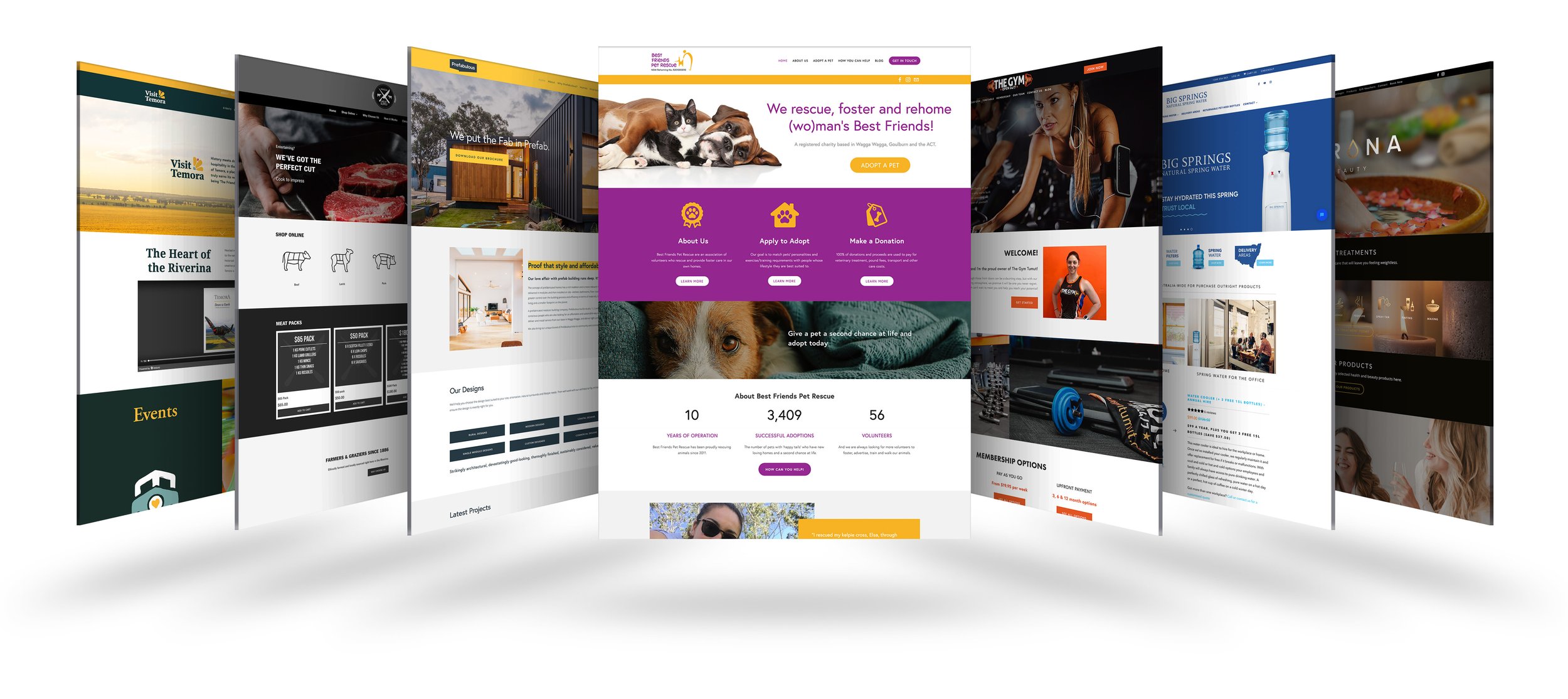Leading Tips for Creating an Impactful Site Design That Transforms
To accomplish this, one have to consider a range of factors, including understanding the target audience, focusing on user experience, and enhancing for mobile platforms. The tactical use of engaging call-to-actions and a well-defined visual power structure plays a vital role in directing customers with their trip.

Understand Your Target Market
Comprehending your target market is fundamental to effective web site design, as it prepares for creating an appealing individual experience. Recognizing who your users are, including their demographics, preferences, and actions, enables designers to tailor the web site's content, layout, and functionality to fulfill specific needs.
Performing thorough market research study is crucial in this process. Studies, interviews, and analytics can offer useful insights right into customer assumptions and pain points. By assembling this information, designers can create individual identities that represent different segments of the audience, making sure that style decisions are notified and appropriate.
Additionally, understanding the target market helps in selecting ideal layout elements such as color systems, typography, and images that reverberate with customers. A web site that speaks straight to its audience cultivates a sense of link and trust, motivating longer gos to and greater conversion prices.
Inevitably, a user-centered technique to site layout not only enhances customer fulfillment however likewise supports organization goals by driving interaction and commitment. By prioritizing the demands and choices of the target market, a web site can effectively offer its function and accomplish wanted results.
Prioritize Individual Experience
To boost the general effectiveness of an internet site, focusing on individual experience (UX) is essential (Website Design). A well-designed UX ensures that visitors can navigate the website effortlessly, discover details quickly, and engage with content meaningfully. This results in raised user satisfaction and greater conversion rates
Begin by executing instinctive navigation. Menus needs to be realistically structured, enabling users to situate key areas of the website with minimal initiative. Uniformity in design elements, such as shade schemes and fonts, fosters knowledge, which is critical for keeping user engagement.
Additionally, take into consideration the filling rate of your site. A delay of just a few secs can cause significant drop-offs, as individuals are less most likely to wait on a slow-loading page. Improving pictures and maximizing code can enhance performance and retain visitors.
Furthermore, clarity in material presentation is crucial. Use succinct, engaging language and separate message with visuals to enhance readability. By prioritizing customer experience, you not just produce an extra satisfying environment for visitors yet likewise strengthen your brand's credibility. Inevitably, a focus on UX is an investment in the long-term success of your web site.
Enhance for Mobile Instruments
Optimizing for mobile devices is critical in today's digital landscape, where an enhancing variety of customers accessibility web sites with smartphones and tablet computers. A mobile-friendly layout not just boosts individual experience however also plays a substantial duty in improving online search engine rankings. To achieve this, it is important to adopt a responsive design that automatically readjusts to different screen dimensions and alignments.

Filling speed is another critical element; mobile users are typically much less client and anticipate fast accessibility to info. Maximize images and utilize web browser caching to improve efficiency. Ultimately, test your website on numerous gadgets and screen resolutions to identify and remedy any prospective functionality issues. By focusing on mobile optimization, you make certain that your site continues to be competitive and properly involves a broader target market.
Use Engaging Call-to-Actions
A website's efficiency often depends upon its ability to direct visitors toward desired activities, making compelling call-to-actions (CTAs) necessary components of look at this now style. CTAs offer as the crucial points that direct customers to engage with the site, whether that indicates making a purchase, enrolling in an e-newsletter, or downloading a resource.
To develop reliable CTAs, quality is paramount. Use succinct language that clearly communicates the action you want the user to take. Phrases such as "Begin," "Join Free," or "Store Now" not only communicate seriousness however also get rid of uncertainty. The placement of CTAs is just as important; more helpful hints they should be strategically positioned throughout the webpage to guarantee they are easily noticeable, specifically in high-traffic locations.
In addition, consider making use of directional signs, such as arrows or pictures, to guide users toward these switches. By concentrating on these aspects, services can dramatically enhance customer engagement, driving conversions and eventually attaining their internet site's goals.
Emphasis on Visual Hierarchy
Effective site style counts heavily on a well-structured visual hierarchy that guides customers via content seamlessly. By organizing components in a fashion that prioritizes information, developers can enhance individual experience and assist in decision-making. This entails making use of dimension, shade, contrast, and spacing purposefully to accentuate one of the most critical elements of a webpage.
Using bigger font styles for headings and subheadings develops a clear distinction between different sections, enabling individuals to scan content effortlessly. Additionally, employing different shades for switches and calls-to-action can catch user focus and urge communication. Whitespace is an additional essential component; it stops mess and allows individuals to concentrate on crucial messages without diversions.
Pictures and graphics ought to complement the message while likewise adhering to the recognized hierarchy, enhancing the overall message (Website Design). Consistency in layout components, such as color pattern and typography, additional enhances the visual hierarchy, making navigating user-friendly

Verdict
Finally, reliable site layout necessitates a detailed understanding of the target market, prioritization of user experience, and mobile optimization. The critical use of compelling call-to-actions and a distinct visual power structure further improves customer involvement. By implementing these concepts, internet sites can accomplish higher conversion rates, making sure that design elements not only draw in site visitors yet also assist in seamless navigating and interaction. Eventually, a well-executed web site layout serves as a vital part in driving customer actions and achieving organization objectives.